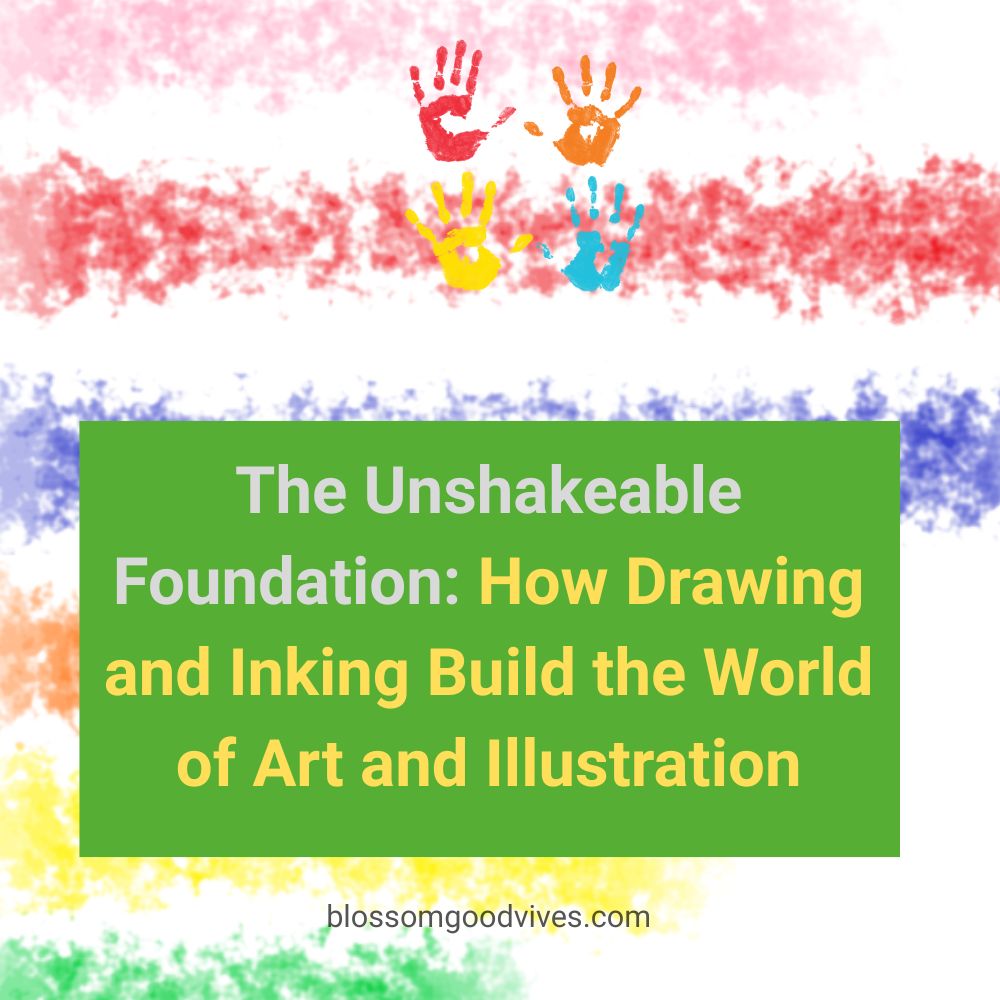
In an age of dazzling digital art and 3D animation, the timeless disciplines of drawing and inking remain the unshakeable foundation upon which all visual storytelling is built. They are the most important part of creativity, the first breath of life for a character, and the final, confident statement that defines an image.
More than just steps in a process, drawing is the architecture of thought, and inking is the rhetoric of line—the art of making that thought permanent, powerful, and clear.
This journey from a tentative pencil sketch to a bold, finished ink piece is one of the most transformative and essential processes in an artist’s toolkit.
Part I: The Drawing – Where Everything Begins
Drawing is not merely the act of putting pencil to paper. It is the process of searching, understanding, and constructing. It is the stage for problem-solving, where the artist wrestles with form, composition, and narrative.
The Primacy of the Sketch:
The initial sketch, often rough and loose, is the purest expression of an idea. It’s a visual brainstorm where proportion, perspective, and gesture are explored without the pressure of perfection.
This phase is about capturing the energy of the subject, not its photorealistic details. A dynamic, slightly “wrong” sketch often holds more life than a stiff, technically accurate one.
The Armature of Form: Construction Drawing
Beneath the surface of every great drawing lies a strong structural armature. This is the principle of construction—breaking down complex forms into simple, three-dimensional shapes like spheres, cubes, and cylinders.
Why it matters: Drawing a head as a sphere with guidelines for the face planes is more accurate than tracing an outline. It instantly creates a sense of volume and dimension, allowing the artist to rotate the form in space convincingly. This is the fundamental skill that separates amateurs from professionals, providing a solid scaffold upon which details can be hung.
The Power of Gesture and Line of Action
For illustrators, especially in character-driven work, capturing the gesture is paramount. The gesture is the essence of a pose—the flow, the rhythm, the story of the movement. A single “line of action” scribbled through a figure can communicate whether a character is leaping joyfully, slumping in defeat, or preparing to strike. A drawing with a strong gesture feels alive, even in its roughest state.
The Refinement: From Rough to Clean
Once the structure and gesture are solid, the artist moves to a “clean-up” phase. Here, a lighter touch or a different pencil is used to define the final lines, clarifying forms, smoothing contours, and adding essential details. This “pencil finish” is the blueprint, the precise map that the inking process will follow.
Part II: The Inking – The Art of Commitment
If drawing is the proposal, then inking is the vow. It is the point of no return, where tentative graphite lines are translated into confident, permanent marks. Inking is not mere tracing; it is an act of interpretation and emphasis.
The Inker’s Toolkit:
The tools an artist chooses fundamentally shape the final outcome.
The Technical Pen (e.g., Micron, Staedtler): Offers consistent, uniform line weight. It is predictable, clean, and excellent for technical drawing, architecture, and a certain graphic novel aesthetic.
The Dip Pen (e.g., G-Pen, Hunt): The classic tool of masters like Rembrandt and modern manga artists. It is responsive, expressive, and unforgiving. The flexible nib creates line variation—thick and thin lines—based on the pressure applied, giving the art a dynamic, organic, and deeply human quality.
The Brush: The ultimate tool for expressive power. A skilled brush inker can move from a hair-thin line to a massive, pooling black shape in a single stroke. It demands supreme confidence and control but offers the greatest range of emotional impact, seen in the work of artists like Frank Frazetta and Mike Mignola.
The Digital Stylus: Modern tablets and apps like Procreate or Clip Studio Paint offer immense versatility. Artists can switch between a perfect technical pen, a pressure-sensitive brush, and a textured dip pen with a single tap, all with the safety net of an “undo” button.
The Language of Line: What Inking Achieves
A master inker does more than just go over pencils; they use line to communicate.
Defining Form and Weight: Line weight (thickness) is used to describe the form. Thicker lines are often placed where shadows naturally gather—under the chin, where a limb connects to the body, or on the underside of an object to ground it. Thinner lines describe upward-facing planes and delicate details. This simple principle creates a powerful illusion of weight and volume.
Creating Texture and Depth: Inkers use a vocabulary of marks to simulate texture. Stippling (dots) for rough surfaces, cross-hatching (layers of parallel lines) for shadow, and swift, energetic strokes for hair or fabric. These textures not only describe surface quality but also create a sense of depth, separating foreground from background.
Establishing Focal Points: The density and complexity of ink lines can guide the viewer’s eye. A character’s face might be rendered with careful, delicate lines, while their cloak is suggested with loose, gestural strokes. This contrast ensures the viewer focuses on what matters most.
Setting the Mood: The very quality of the line carries emotional weight. A drawing inked with shaky, nervous lines feels anxious. One inked with sharp, jagged lines feels aggressive. Smooth, flowing curves feel serene and beautiful. The inker is a performer, and the line is their voice.
The Symbiotic Relationship
The relationship between the pencil and ink stages is a dialogue. Some artists, like many in the comic book industry, thrive on a collaboration between a penciller and a dedicated inker. The penciller provides the structure and drama; the inker provides the finish, texture, and polish, often enhancing the original art with their own stylistic flair.
For the solo artist, the process is a continuous evolution of their initial idea. The pencil stage is for exploration and problem-solving. The ink stage is for clarification, emphasis, and final execution.
In our fast-paced, digital world, the deliberate, physical acts of drawing and inking remain a vital practice. They train the hand, the eye, and the mind to see and understand the world in terms of form, light, and movement. Whether the final piece is a vibrant digital painting or a minimalist graphic novel page, its strength almost always rests on the quality of its underlying drawing and the confidence of its inks.
They are the twin pillars of visual communication—the first word and the final, definitive period in the sentence of an image. To master them is to master the very language of art itself.
